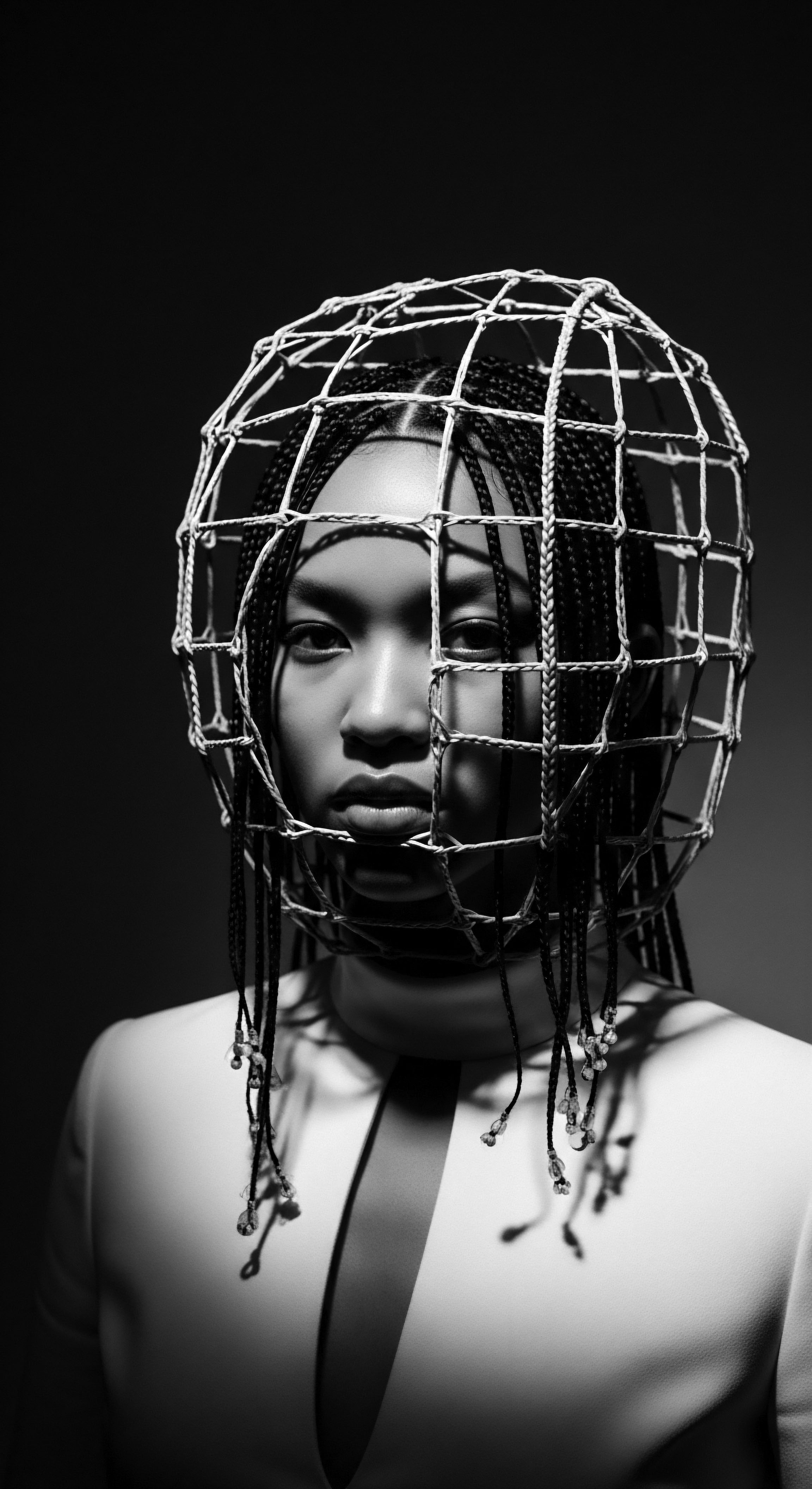
Fundamentals
The concept of Digital Representation, at its core, speaks to the translation of tangible, lived experiences into the realm of binary code and virtual spaces. It is the careful capture, the thoughtful rendering, of information through computational means, transforming the physical into data that a machine can store, process, and display. This process allows for the encoding of details—textures, patterns, hues, and forms—into a format accessible across screens and networks. In its simplest interpretation, Digital Representation is the act of mirroring a physical reality, however complex, within a digital environment, preserving its characteristics in a new, accessible form.
For those of us deeply attuned to the legacies carried within every strand of textured hair, the fundamental understanding of Digital Representation extends far beyond mere technical definitions. It becomes a lens through which we might observe how the very essence of our hair, its unique biology, its ancestral stories, and its contemporary expressions, find new avenues for existence in the digital sphere. This initial articulation of Digital Representation merely scratches the surface; its implications unfold with greater depth when viewed through the profound connections to cultural heritage. It is the initial step in understanding how something so intimately personal as a curl pattern can be rendered visible and shareable across vast distances.
Digital Representation is the transformation of physical reality into accessible data, offering new avenues for heritage to exist and be shared.
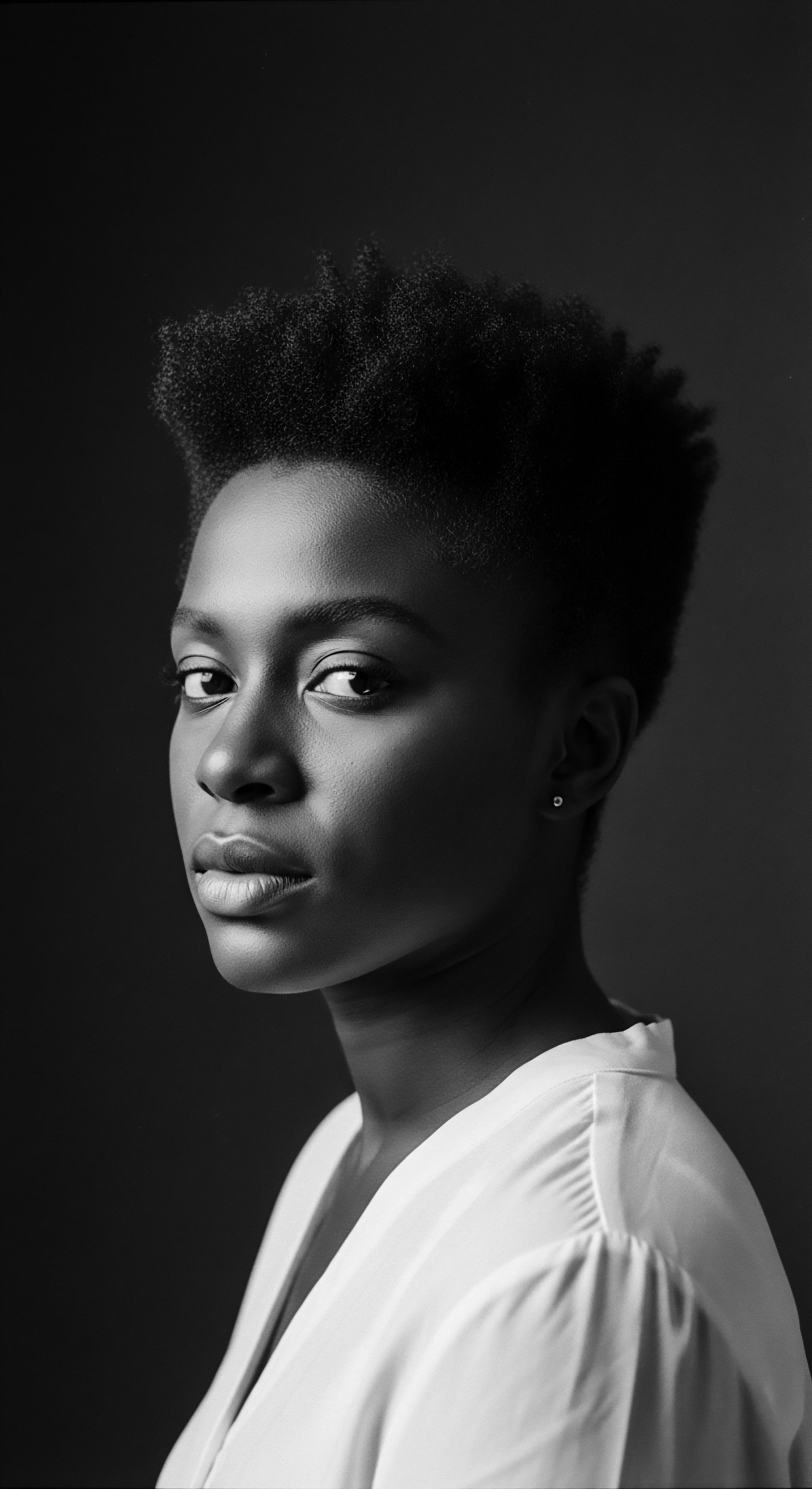
Shaping Visuals in the Digital Space
When considering the visual aspects of Digital Representation, particularly as they relate to textured hair, we begin to perceive how images and videos become digital echoes of physical styles. Each photograph, each moving picture capturing a braid, a twist, or an Afro, serves as a digital imprint. These digital assets are then stored as pixels and algorithms, allowing for their reproduction and dissemination. This digital rendering of our hair creates a visual archive, a readily available collection that can convey forms and styles to a wide audience.
The precision of this encoding determines how faithfully a digital image reflects the authentic texture and volume of natural hair. A higher resolution, for instance, translates to more data points, leading to a more truthful representation of intricate patterns and the tactile qualities of curls and coils. This technical fidelity is significant, especially given historical contexts where the beauty of textured hair was often misunderstood or rendered invisible in mainstream media. The capacity to delineate the true form of diverse hair types digitally offers a pathway to genuine acknowledgment and celebration.

Elemental Components of Digital Visuals
- Pixel Grid ❉ An arrangement of tiny squares, each holding color information, that collectively form a digital image.
- Resolution ❉ The density of pixels, determining the clarity and detail a digital image can present.
- Color Depth ❉ The number of distinct colors a pixel can display, contributing to the richness and realism of hair imagery.
- Compression Algorithms ❉ Methods for reducing file size, often balancing image quality against storage and transmission efficiency.
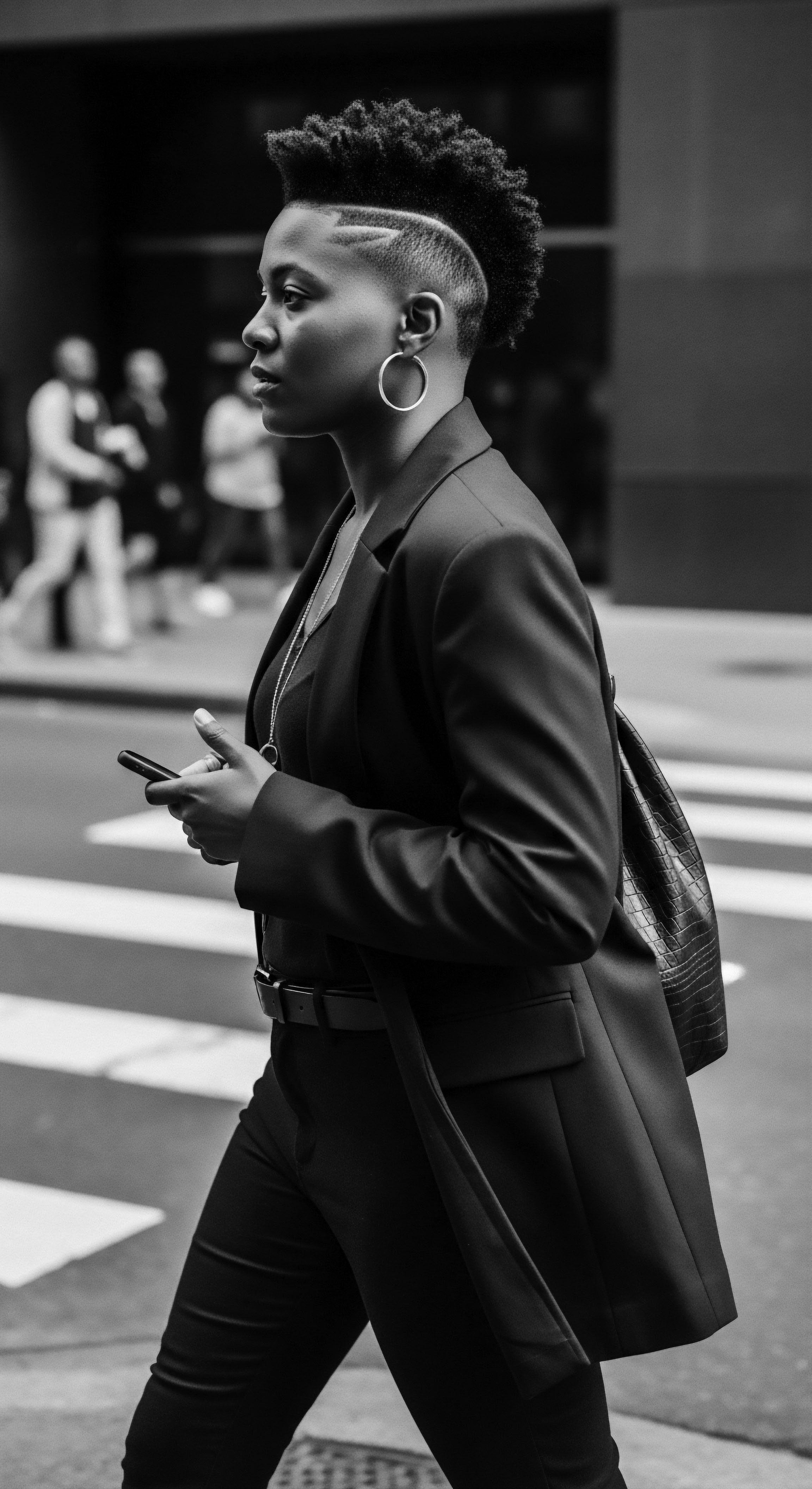
The Language of Digital Patterns
Beyond static visuals, Digital Representation also encompasses the way patterns and structures are codified. Think of the algorithms that recognize distinct curl types, or the mapping of braiding techniques into sequential steps. These systems translate complex physical arrangements into logical, computational instructions.
Such a translation allows for the standardization and sharing of traditional styling knowledge, making it accessible even to those unfamiliar with ancestral methods. The methodical organization of these digital patterns mirrors the systematic approach often found in historical hair practices, where precise knowledge was passed down through generations.
The designation of distinct curl patterns—from wavy to coily—into digital categories serves a practical purpose for care and styling. Understanding these classifications within a digital framework aids in identifying suitable products and techniques. This digital specification offers a clear way to categorize hair’s inherent architecture, laying a foundation for personalized care. The delineation helps individuals connect with their hair’s natural characteristics, moving away from past expectations of conforming to textures not their own.
| Digital Element Bit |
| Simple Meaning The smallest unit of digital data, either 0 or 1. |
| Connection to Hair Heritage Represents the most fundamental building block in capturing any aspect of hair, from a single strand's presence to its absence. |
| Digital Element File Format (e.g. JPEG, MP4) |
| Simple Meaning A standard for organizing and storing digital data. |
| Connection to Hair Heritage Determines how images or videos of hairstyles are stored and accessed, preserving visual records of traditional styles. |
| Digital Element Metadata |
| Simple Meaning Data that provides information about other data. |
| Connection to Hair Heritage Describes a digital image of hair, including creation date, photographer, or even cultural context, aiding in archival efforts. |
| Digital Element These foundational digital elements collectively facilitate the preservation and transmission of hair's rich cultural stories across generations. |

Intermediate
Moving beyond the foundational tenets, the intermediate meaning of Digital Representation deepens into its operational aspects and its growing influence on collective understanding. Here, we perceive Digital Representation not merely as static data but as a dynamic force, capable of shaping perceptions, transmitting cultural wisdom, and facilitating community engagement. Its purport becomes clearer when we consider how digital platforms serve as conduits for cultural exchange, allowing the detailed exposition of heritage practices to reach a global audience. This level of comprehension acknowledges the interactive potential of digital formats, where information about textured hair can be shared, discussed, and expanded upon, fostering a living archive.
The significance of this digital rendering is particularly poignant for communities whose historical narratives and aesthetic traditions have been marginalized or overlooked. Digital Representation, at this stage, offers tools for reclamation and amplification. It allows for the widespread communication of specific hair care practices that have been passed down through familial lines for centuries, enabling their continuity and adaptation in a modern context. This intermediate understanding provides a bridge between ancestral knowledge and contemporary accessibility, ensuring that traditional practices find new life in digital spaces.

Digital Archives of Ancestral Knowledge
The construction of digital archives provides a more structured and enduring form of Digital Representation for hair heritage. These digital repositories can house vast collections of images, texts, and oral histories pertaining to Black and mixed-race hair traditions. Such archives safeguard knowledge that might otherwise diminish with time or geographical dispersion.
They serve as cultural fortresses, preserving the intricate details of ancient braiding techniques, the uses of natural ingredients, and the symbolic meanings embedded within various hairstyles throughout history. This systematic collection and digital explication of heritage ensures that past wisdom remains accessible.
Consider, too, how these digital collections can document the evolution of styles, demonstrating the resilience and adaptability of hair traditions across different eras and continents. From the intricate patterns of West African cornrows, which once served as maps to freedom during times of enslavement, to the powerful Afro of the Civil Rights era, digital archives capture these transformative periods. They offer a tangible, albeit virtual, connection to a rich ancestral past, allowing present and future generations to delve into their roots with clarity.
Digital archives transform fleeting moments and ancestral wisdom into enduring records, ensuring the continuity of hair heritage.
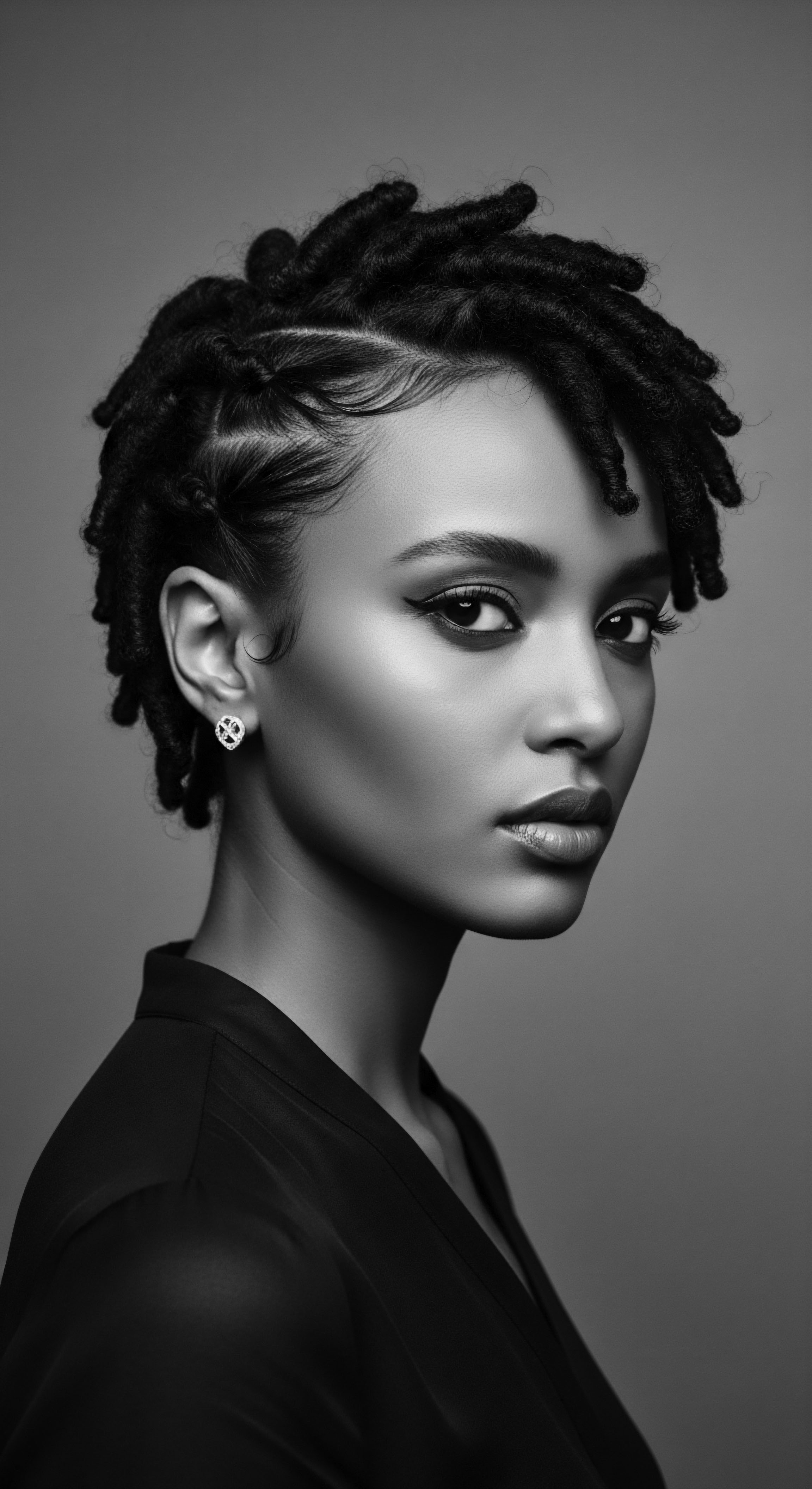
Curating Heritage Through Digital Collections
- Visual Documentation ❉ High-resolution images and videos capture the complex structures and artistry of traditional hairstyles.
- Oral Histories ❉ Recorded narratives and testimonies preserve the stories and experiences associated with hair practices, directly from elders and community members.
- Textual Records ❉ Digitized historical texts, cultural treatises, and ethnographic studies provide scholarly context for hair traditions.
- Interactive Timelines ❉ Digital presentations that map the historical progression of hair styles and their cultural significance across different periods.

The Role of Algorithms in Cultural Algorithms
Beyond static archival content, Digital Representation at an intermediate level also involves the programming of algorithms to process and interpret hair-related data. These computational frameworks can analyze photographs to identify specific curl types, or even suggest traditional styling techniques based on user input. Such applications demonstrate a deeper level of digital engagement with hair science and cultural practices. It represents an ongoing dialogue between human ingenuity and computational logic, where the latter learns from and helps perpetuate the former.
The development of culturally sensitive algorithms carries profound implications for the equitable representation of diverse hair textures. By learning from a wide array of authentic images, these algorithms can move beyond Eurocentric biases that have historically plagued beauty standards. This careful attention to diverse representations ensures that digital tools serve to validate and celebrate the spectrum of textured hair, rather than inadvertently perpetuating narrow ideals. The intent is to create systems that reflect the reality of human hair diversity.
| Aspect of Hair Practice Knowledge Transfer |
| Traditional Modality (Past) Oral traditions, direct apprenticeship within communities. |
| Digital Representation (Present) Online tutorials, video demonstrations, digital encyclopedias of styles. |
| Aspect of Hair Practice Styling Documentation |
| Traditional Modality (Past) Memory, sketches, physical examples. |
| Digital Representation (Present) High-resolution photographs, 3D scans of intricate braids, augmented reality filters. |
| Aspect of Hair Practice Community Building |
| Traditional Modality (Past) Physical gatherings, salons, family rituals. |
| Digital Representation (Present) Social media groups, online forums, virtual styling sessions. |
| Aspect of Hair Practice Digital pathways extend the reach and longevity of time-honored hair traditions, fostering their continuity across global communities. |

Academic
The academic elucidation of Digital Representation transcends basic explanation, delving into its profound theoretical underpinnings, socio-cultural ramifications, and epistemological implications within the context of textured hair heritage. Here, Digital Representation is conceptualized not merely as a technical process of data conversion, but as a complex semiotic system and a contested site of power, identity, and historical memory. Its meaning extends to encompass the intricate ways in which digital constructs shape, and are shaped by, embodied experience, particularly for Black and mixed-race communities for whom hair holds immense historical and political weight. This academic perspective requires a critical examination of how digital artifacts and platforms both preserve and, at times, distort ancestral knowledge, calling for a nuanced understanding of their role in cultural continuity and transformation.
Scholarly inquiry into Digital Representation within this domain often investigates the tension between its democratizing potential and the perpetuation of existing biases. How do algorithmic biases, for instance, affect the visibility or accurate rendering of diverse hair textures in digital imaging software? Conversely, how do community-led digital initiatives serve as powerful counter-narratives, reclaiming agency over representation?
Such an examination explores the agency inherent in digital creation, where individuals and communities actively construct digital identities that reflect and reinforce their heritage. The designation of digital forms, therefore, becomes a deliberate act of cultural assertion.

The Epistemology of Digital Identity and Hair
From an academic viewpoint, the Digital Representation of textured hair prompts an investigation into the very nature of knowledge construction and self-perception in the digital age. Hair, historically a potent marker of identity, status, and resistance within diasporic communities, gains new layers of meaning when rendered digitally. This transformation raises questions about what constitutes an authentic representation when a physical attribute is re-contextualized within a virtual space. The scholarly interpretation here considers how digital avatars, filtered images, and online self-presentations become extensions of one’s identity, influencing self-esteem and cultural belonging.
The academic lens also considers the complex interplay between individual expression and collective identity within digital realms. For Black women, for example, the widespread sharing of natural hair journeys on platforms like YouTube has fostered a renewed sense of community and collective empowerment. This phenomenon, often termed the “Natural Hair Movement,” gained significant momentum online. Scholars have observed how social and digital media have come to hold the communal, cultural, and political meanings of Black beauty, with over 133 million Black natural hair blogs active in 2015 alone (Gill, 2015).
This statistic underscores the profound shift of hair politics into the internet, where platforms became spaces for deliberate communication and the challenging of societal norms. The movement illustrates how Digital Representation not only mirrors a cultural shift but actively propels it, creating a rich tapestry of shared experiences and validated identities. This shift signifies a powerful reclamation of narratives, moving away from Eurocentric ideals that long dominated mainstream media.
Academic analysis of Digital Representation reveals it as a semiotic system, a tool for cultural reclamation, and a space where identity and historical memory are actively negotiated.
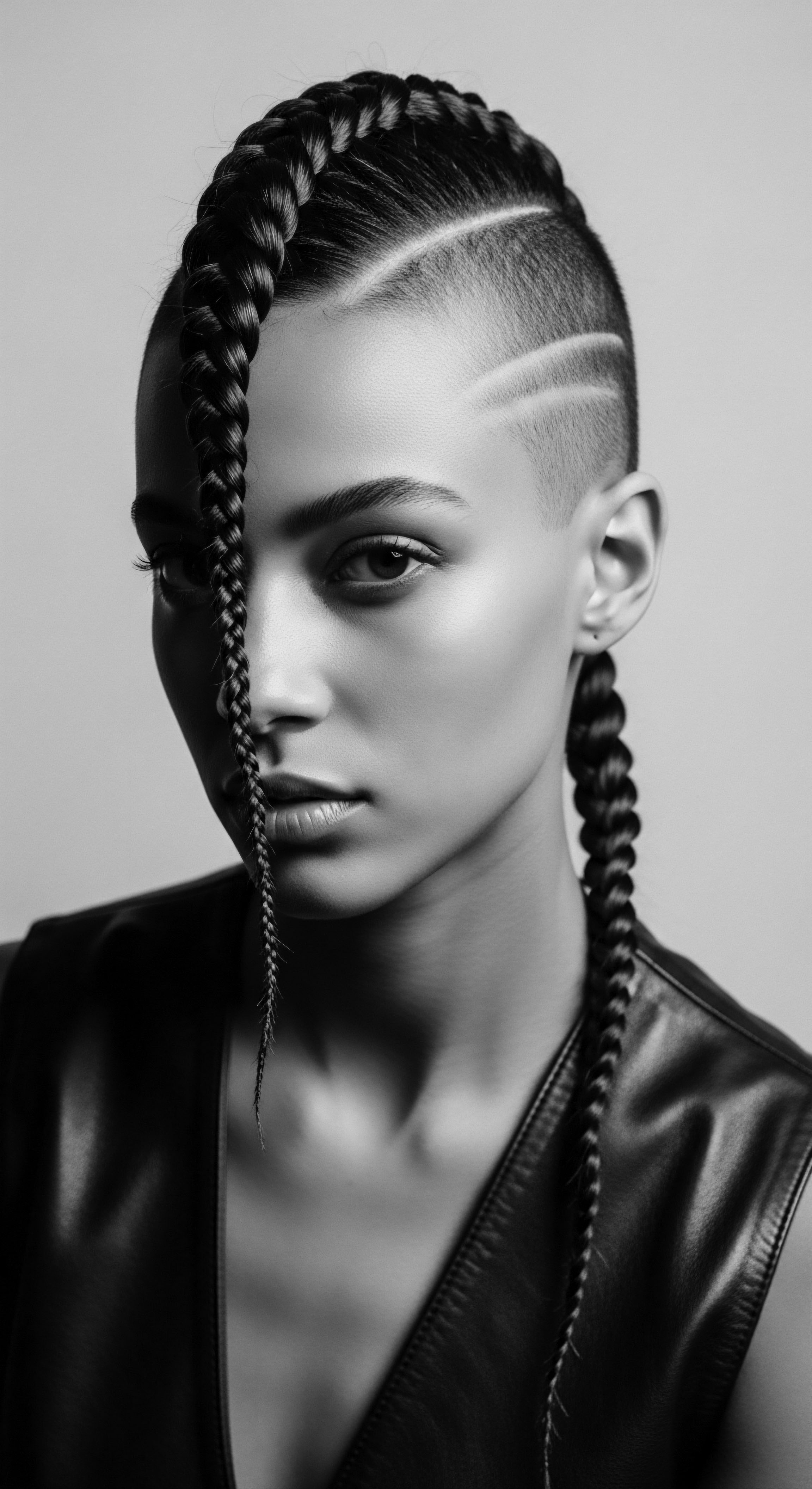
Algorithmic Bias and Counter-Hegemonic Digital Practices
A significant area of academic scrutiny concerns the potential for algorithmic bias in Digital Representation, particularly as it pertains to the diverse spectrum of textured hair. Many early facial recognition systems and image processing algorithms, developed with datasets predominantly featuring straight or loosely curled hair, often struggled to accurately identify or render tighter curl patterns and darker skin tones. This deficiency led to an algorithmic invisibilization, where certain hair types were either misclassified, smoothed over, or simply not recognized as fully present. This academic exploration critiques how such technical shortcomings reflect and perpetuate broader societal biases, influencing everything from digital beauty filters to professional visual software.
Conversely, academic inquiry also celebrates the rise of counter-hegemonic digital practices. These are community-led initiatives that intentionally develop and deploy Digital Representations to affirm and celebrate textured hair. Examples include the creation of specialized databases for diverse hair textures, the development of open-source algorithms trained on inclusive datasets, and digital art projects that satirize or subvert conventional beauty standards. These efforts represent a conscious engagement with Digital Representation as a site of resistance and cultural self-determination.
They work to correct historical imbalances, ensuring that the digital realm truly reflects the global diversity of human hair. The strategic use of digital tools becomes a method for cultural preservation and advocacy, moving past passive consumption to active creation.
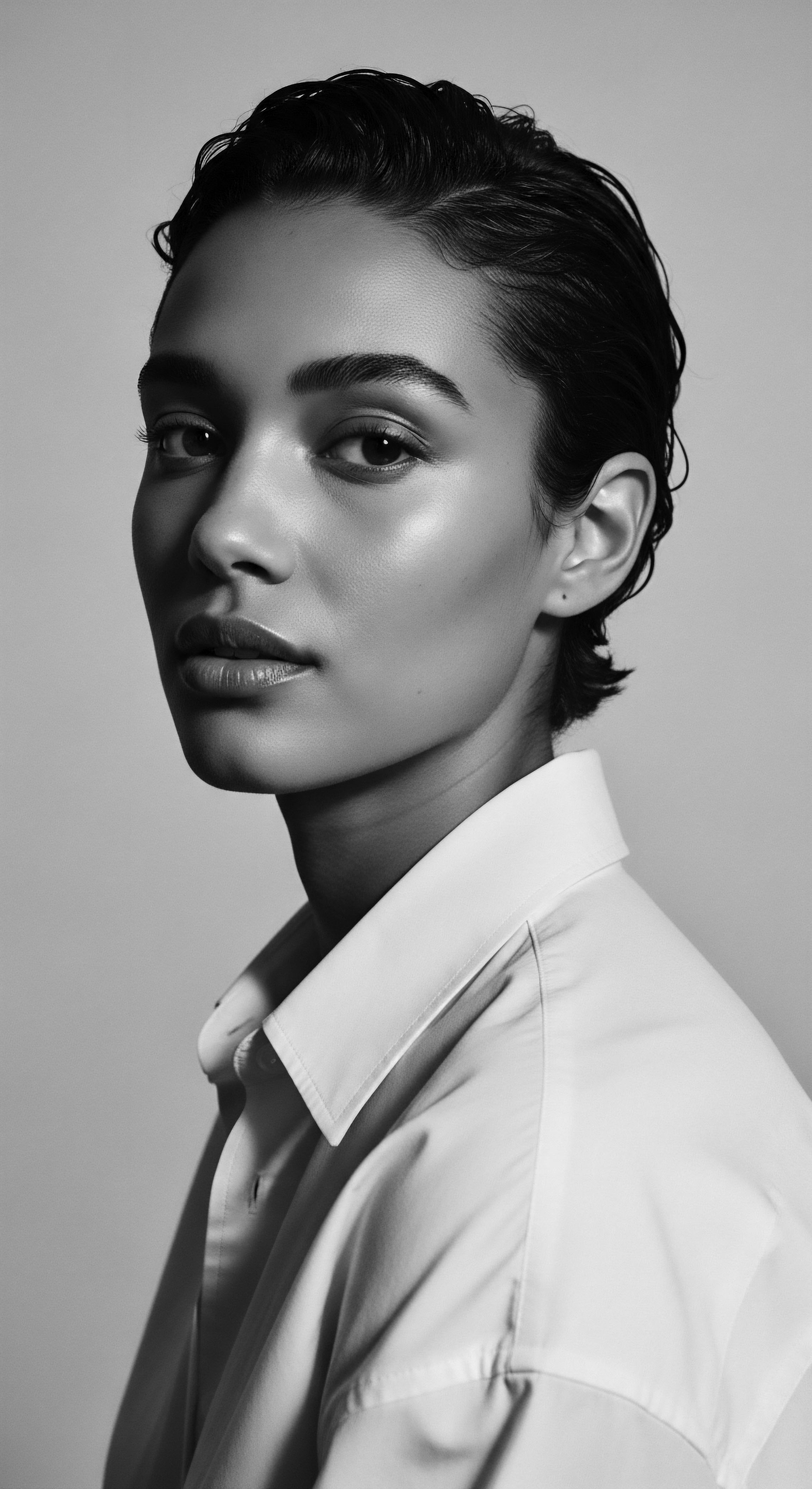
Interconnectedness in Digital Hair Studies
The academic meaning of Digital Representation also considers its interconnectedness across various scholarly fields, creating a multidisciplinary understanding of its influence on hair heritage:
- Computer Science and Aesthetics ❉ This intersection examines the technical challenges and innovative solutions for rendering realistic and culturally sensitive digital models of textured hair, exploring the aesthetics of computational representation.
- Anthropology and Digital Ethnography ❉ Scholars investigate how digital platforms facilitate the continuation and evolution of hair traditions, documenting online communities, and the digital transmission of ancestral practices.
- Media Studies and Critical Race Theory ❉ This area analyzes how Digital Representation shapes perceptions of Black and mixed-race identity, scrutinizing media portrayals, and the impact of digital narratives on self-acceptance and cultural pride.
- Digital Humanities and Archival Science ❉ This field focuses on the creation and management of digital archives dedicated to hair heritage, exploring ethical considerations around data ownership, accessibility, and repatriation of cultural knowledge.

The Digital Repatriation of Hair Culture
Perhaps one of the most profound academic aspects of Digital Representation, within the context of hair heritage, is its potential role in digital repatriation. While the physical repatriation of human remains or cultural objects has long been a complex endeavor for museums and institutions, digital technologies offer a new dimension to this process. This does not imply a digital substitute for physical return, but rather a complementary mechanism for reconnecting diasporic communities with their cultural patrimony, even when physical artifacts remain distant. Academic studies explore how high-resolution 3D scans of historical hair artifacts, or digital reconstructions of ancient hairstyles, can be made accessible to originating communities.
The significance of this digital return lies in its capacity to restore cultural agency and facilitate intellectual access. For instance, detailed digital models of ceremonial adornments or ancient braiding tools held in international collections can be virtually returned to their cultural heirs. This allows communities to study, interpret, and revitalize traditions that were severed by colonial practices.
The ethical implications of such digital projects are paramount, demanding collaborative partnerships that prioritize Indigenous knowledge systems and ensure that digital assets are stewarded in a culturally respectful manner. This academic pursuit seeks to rectify historical disconnections through innovative digital means, fostering cultural continuity.
| Era/Paradigm Early Digital Era (1990s-early 2000s) |
| Dominant Digital Approach Limited visual accuracy for textured hair; focus on basic digitization of mainstream imagery. |
| Academic Critique/Focus Critique of algorithmic bias, perpetuation of Eurocentric beauty standards in software. |
| Era/Paradigm Web 2.0 & Social Media (Mid-2000s-Present) |
| Dominant Digital Approach User-generated content, rise of Natural Hair Movement online; community building. |
| Academic Critique/Focus Analysis of digital identity construction, self-esteem, communal empowerment, and online activism. |
| Era/Paradigm Advanced Computing & AI (Present-Future) |
| Dominant Digital Approach AI-driven style recognition, 3D modeling, virtual reality for hair design, digital repatriation. |
| Academic Critique/Focus Ethical AI development, data sovereignty, decolonization of digital archives, nuanced representation. |
| Era/Paradigm The academic discourse on Digital Representation continuously adapts, scrutinizing its societal impacts while seeking to leverage its capacity for cultural equity and historical reclamation. |
The intricate understanding of Digital Representation within academia moves beyond mere technical replication; it examines the philosophical underpinnings of translating lived human experience into data. It considers how digital forms become new sites for the inscription of cultural values, for the contestation of dominant narratives, and for the ongoing re-definition of what it means to carry the heritage of textured hair in an increasingly digitized world. The academic lens reveals Digital Representation as a powerful agent in the continuous dialogue between past, present, and future, particularly for communities whose identity is deeply intertwined with their hair’s rich history.

Reflection on the Heritage of Digital Representation
As we bring our exploration of Digital Representation to a thoughtful close, particularly within the tender, storied landscape of textured hair heritage, we stand at a unique juncture. This journey has unfolded through the elemental biology echoing from the source, through the living traditions that form a tender thread of care, and into the boundless possibilities of an unbound helix, where identity finds its voice in the digital ether. The significance of Digital Representation is truly profound, far surpassing simple technological advancement. It manifests as a living, breathing archive, deeply woven into the ancestral practices that have always honored our hair as a sacred extension of self and spirit.
The very idea of digital echoes of our hair’s journey—from the ancient wisdom of braiding patterns that mapped freedom to the vibrant, global online communities of today’s natural hair movement—underscores a continuous thread of resilience and ingenuity. Digital spaces have, indeed, become new hearths where stories are shared, where ancestral care rituals are adapted for modern hands, and where the collective memory of a people’s hair traditions finds both preservation and renewed life. This continuity reminds us that heritage is not a static artifact of the past but a dynamic, evolving force that adapts to new mediums while retaining its core essence.
The interpretation of Digital Representation in this light offers a powerful testament to the enduring human need for connection and self-expression. It acknowledges that hair, for Black and mixed-race individuals, is far more than mere keratin strands; it is a profound cultural text, a historical document, and a personal statement. The ability to render this intricate meaning digitally allows for its widespread dissemination and understanding, bridging geographical divides and fostering a deeper sense of global kinship. The act of sharing an ancient technique through a tutorial, or celebrating a new style through a digital image, becomes a quiet yet powerful affirmation of identity and belonging.
We are called to view these digital expressions with reverence, recognizing them as extensions of ancestral wisdom, carried forward by new means. The digital realm provides a vast, open canvas for future generations to explore, to innovate upon, and to further articulate the enduring beauty and power of their hair heritage. This continuous dialogue between past and present, facilitated by Digital Representation, ensures that the soul of a strand, rich with history and vitality, will continue to inspire and resonate for generations to come. It affirms that the spirit of our hair, its history, its care, and its cultural power, remains vibrant and ever-present, in every physical curl and every digital pixel.

References
- Gill, K. (2015). #TeamNatural ❉ Black Hair and the Politics of Community in Digital Media. Ph.D. Dissertation, Department of Communication, University of California, San Diego.
- Roberts, A. R. (2019). ‘Until the Lord Come Get Me, It Burn Down, Or the Next Storm Blow It Away’ ❉ The Aesthetics of Freedom in African American Vernacular Homestead Preservation. Buildings & Landscapes ❉ Journal of the Vernacular Architecture Forum, 26(2), 73–97.
- Rooks, N. M. (1996). Hair Raising ❉ Beauty, Culture, and African American Women. Rutgers University Press.
- Mutiti, N. (2015). Ruka (To braid / to knit / to weave). Book Arts.
- Drumond, N. (2020). The Impact of Social Media Representations of Black Women’s Hair on their Sense of Identity, Self-Concept and Hair Care Practices. Master’s Thesis, Department of Communication, University of the Witwatersrand.
- McLeod, N. S. (2019). How the Internet Changed the Natural Hair Movement. Thesis, Department of Journalism, University of Texas at Arlington.
- Brown-White, C. (2005). The Natural Hair Journey ❉ Social Media Communities on YouTube and the Promotion of. Master’s Thesis, University of Missouri-St. Louis.
- Holloway, E. (2023). Recover and Remix ❉ Digital Humanities, Heritage Preservation, and Black Geographies. In Digital Humanities, 3(1).
